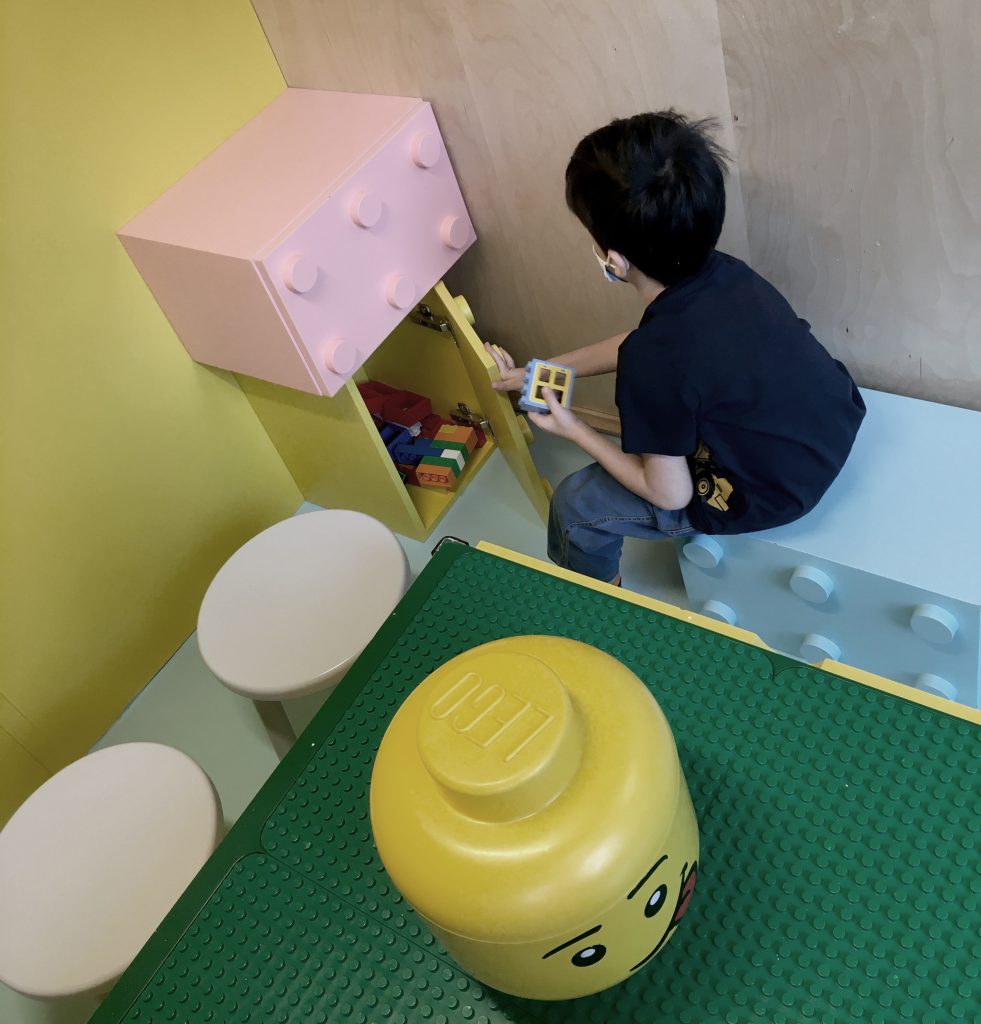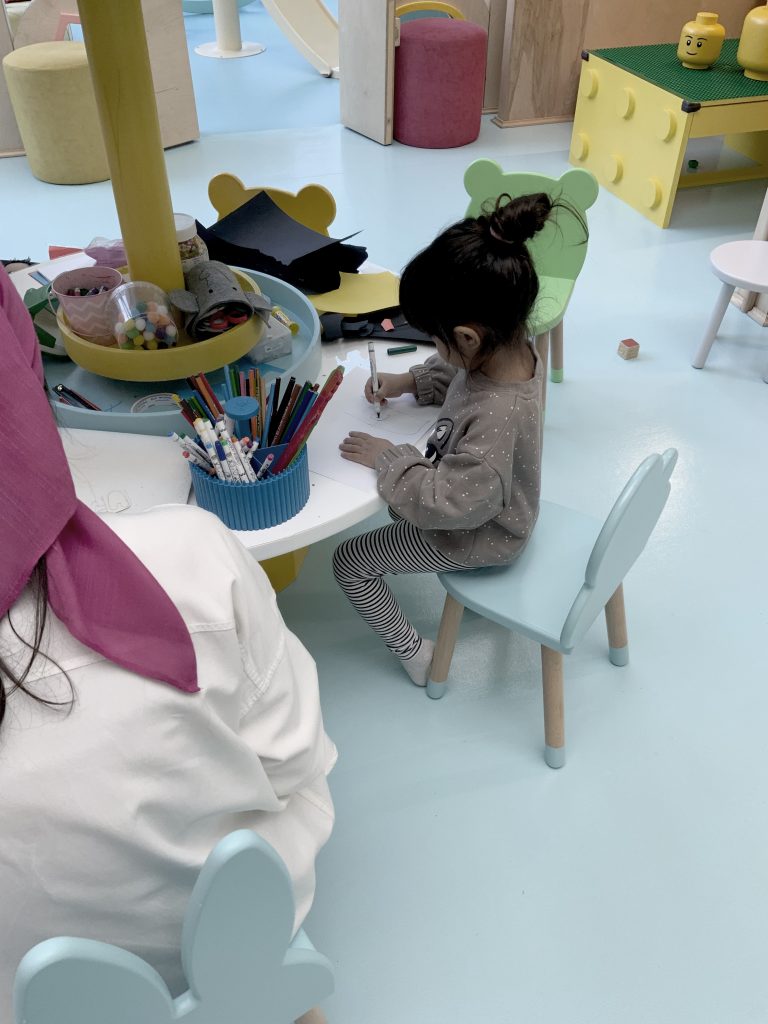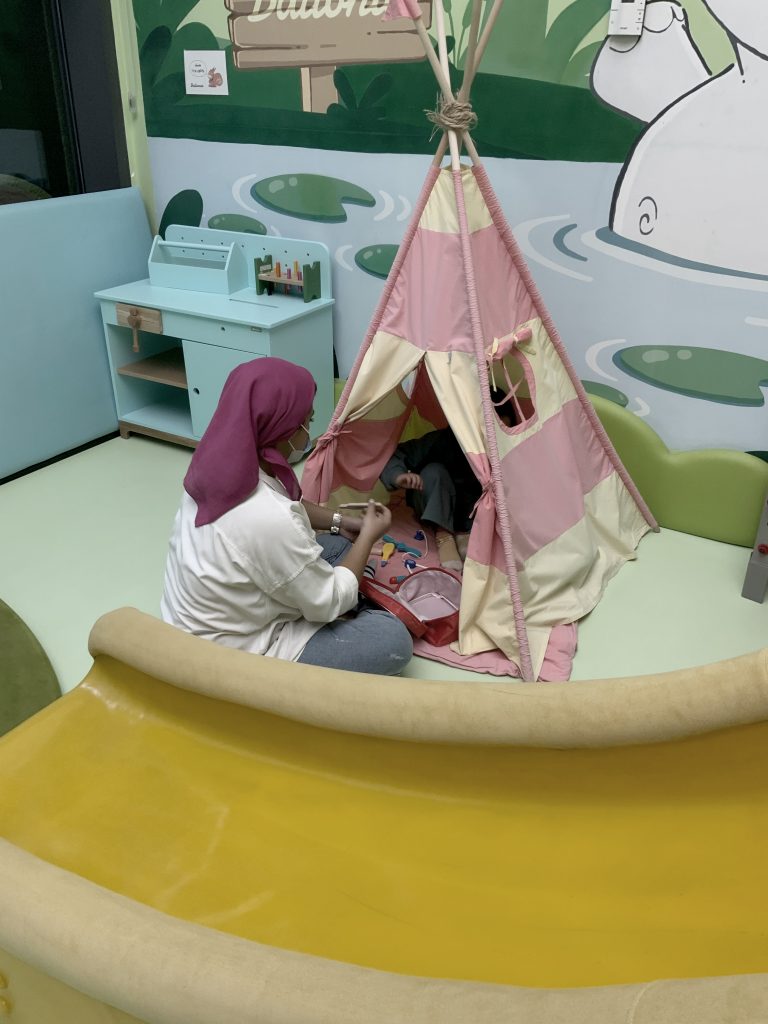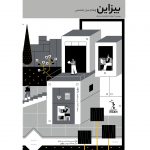

The Impact of Well-Designed Ground Plays and Group Toys on Future Psychological Well-being
Why is this important?
In recent decades, there has been a significant rise in the number of children diagnosed with long-term illnesses requiring hospitalization. Despite the various contributing factors behind this increase, it is crucial to delve deeper into the well-being of these children beyond the conventional focus on their physical health. Unfortunately, the mental well-being of these young patients during and after treatment often goes overlooked. Research in psychology has consistently shown that early experiences can predispose individuals to develop mental disorders in adulthood. It is also crucial to know that children developing brains during the early years of life are highly vulnerable to environmental influences. Experiences occurring during this period can permanently modify brain structure and function through epigenetic modifications and consequently affect the susceptibility to mental disorders.
Hence, it becomes imperative to thoroughly examine all the factors that contribute to
tension and stress in these children’s lives. By understanding and addressing these issues, we can better support their overall health and resilience and solve some of these issues through a well-thought-through design.
Some of these known factors are:
1. Prolonged Stress and Trauma:
Long-term illnesses can create a continuous state of stress and trauma for children, affecting their emotional well-being and potentially leading to anxiety disorders and post-traumatic stress disorder (PTSD).

2. Social Isolation:
Hospitalization often leads to reduced social interactions and isolation from peers, friends, and regular social activities. This isolation can contribute to feelings of loneliness, chronic stress, and depression.
3. Loss of Control and Autonomy:
Children in hospitals might feel a loss of control over their lives due to medical procedures and the need to follow strict routines. This diminishing sense of autonomy can result in feelings of helplessness, and frustration while hindering their natural process of personality development.
4. Chronic Pain and Discomfort:
Children dealing with long-term illnesses might experience chronic pain and discomfort, which can impact their mental health, leading to mood disorders and decreased quality of life.
5. Fear of Medical Procedures:
Frequent medical interventions and procedures can cause anxiety and fear in children, especially if they associate these procedures with pain or discomfort.
6. Early Education and Developmental Challenges:
Prolonged hospitalization may disrupt a child’s early education and developmental milestones, leading to difficulties with future academic progress and overall development, which can contribute to stress and feelings of inadequacy.
7. Adjustment Difficulties:
Repeated hospitalizations and the need to adapt to a medical environment can be challenging for some children, leading to adjustment disorders and emotional disturbances.
8. Being Far from Home and Change in Family Dynamics:
Chronic illnesses can put significant strain on families, and children might experience anxiety related to family dynamics, financial difficulties, and changes in family roles.
9. Grief and Loss:
Children with long-term illnesses may experience grief and loss related to the life they once had before the illness, as well as the potential loss of friendships and other opportunities.
10. Lack of Support and Understanding:
Children in hospitals may feel that others do not fully understand their experiences or struggles, leading to a sense of being misunderstood and increasing feelings of loneliness and depression.

What can we do as designers?
A designer can play a significant role in designing hospital playgrounds and group playing toys to improve and prevent mental and psychological issues that children with long-term diseases in hospitals may face. Here are some key strategies we can employ:
1. Creating Inclusive and Accessible Spaces:
Designers should ensure that the playground and play areas are inclusive and accessible to children with various physical abilities. This way, all children can participate in activities regardless of their health conditions, reducing feelings of exclusion.
2. Promoting Safety and Comfort:
Safety should be a top priority in the design. Soft and cushioned surfaces, age-appropriate equipment, and safety measures can prevent injuries and alleviate anxiety for both children and parents.
3. Incorporating Nature and Positive Distractions:
Integrating elements of nature, such as plants and natural colors, can create a calming environment. Positive distractions like interactive wall panels or sound installations can help take children’s minds off medical procedures and reduce stress.
4. Encouraging Social Interaction:
Designers can create spaces that foster social interaction and group play. This can combat feelings of loneliness, isolation, and aid personality development as children can engage with their peers and form supportive connections.
5. Flexible and Customizable Play Spaces:
Designing modular and adaptable play spaces allows children to personalize their experiences based on their interests and abilities, empowering them and promoting a sense of control.
6. Themed Play Areas:
Designing play zones with captivating themes can ignite children’s imaginations and enhance their hospital experience with joy and wonder. Themes based on beloved characters, enchanting fantasy worlds, or educational concepts not only foster a sense of safety but also nurture creativity and cognitive development.
7. Sensory Integration:
Incorporating sensory play elements (textures, sounds, visuals) can enhance cognitive development, emotional regulation, and sensory integration. These thoughtful additions empower children to cope with their medical challenges while fostering personal growth and self-discovery.
8. Child-Centered Design Approach:
Involving children, parents, and healthcare professionals in the design process ensures that the spaces meet the specific needs and preferences of the target users.
9. Ease of Cleaning and Maintenance:
Ensuring that the design allows for easy cleaning and maintenance is essential in a hospital environment to maintain a hygienic and safe play area.
10. Collaboration with Child Life Specialists:
Working closely with child life specialists and psychologists can help designers understand the psychological needs of hospitalized children and incorporate therapeutic elements into the design.
11. Privacy and Comfort for Family:
Consideration should also be given to the comfort of families who might accompany the children. Providing spaces for parents to relax or engage with their children during playtime is vital for family bonding and support.

Conclusion
In conclusion, by carefully implementing these strategies, designers can craft hospital playgrounds and group playing toys that extend beyond mere entertainment, actively nurturing the emotional well-being of children coping with long-term diseases. These thoughtfully designed spaces foster positive and healing hospital experiences by addressing the challenges these children encounter during treatment. Through play, social interactions, and bonding with peers, hospital staff, and family members, children develop a sense of security and trust in the hospital environment. Consequently, these interventions help shield them from potential mental and psychological issues that might otherwise arise in their childhood.
Research has shown that a positive hospital experience can have lasting effects on a child’s overall well-being and resilience. When children are engaged in enriching activities that promote their physical and emotional development, they are better equipped to cope with their medical challenges and envision a brighter future. By proactively addressing the potential contributing factors to mental health issues, designers make a valuable contribution to the holistic care of these young patients and their journey toward a healthier and happier life.

By: Zahra (Niloufar) Saadat-Ramz
Designer of MAKH




